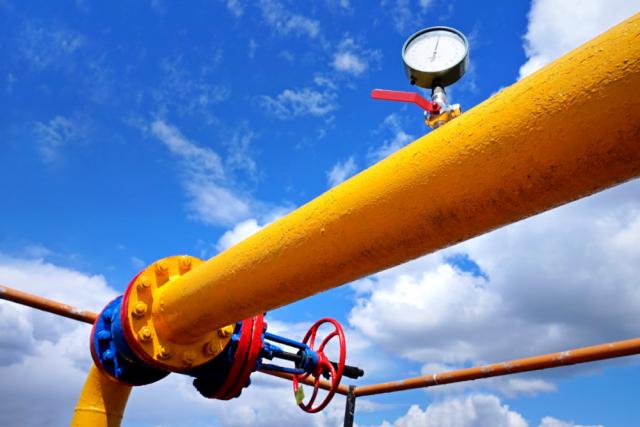
Europe has solved its natural gas problem. It now rightly focuses on decarbonization. Cheap natural gas helps, as it lowers the carbon price needed to displace coal, writes Pierre Noël, a global research scholar at Columbia University’s Center on Global Energy Policy. (Source: Shutterstock.com)
European governments should not overreact to the painful shortages in fossil fuel markets. They reflect a perfect storm at the wrong time in the commodity cycle, not an inherent contradiction between decarbonization and energy security. Europe has the latter and should press ahead with the former.
But energy price spikes have revived concerns that Europe might be held to ransom by Russia, which supplies more than a third of its natural gas. Moscow—the argument goes—made a point about Europe’s dependence, and the folly of opposing its Nord Stream 2 project, by holding up supply instead of helping cool down the markets.
The crisis, therefore, should prompt Europe to unravel its gas relationship with Russia. Moscow emphasized the other side of the same coin, suggesting that Europe’s energy security interest called for a more accommodating foreign policy.
Russia’s offer-you-can’t-refuse can be ignored and so should the calls for energy independence. Attitudes towards Russian gas reflect a curious inability to understand a situation that is largely the product of Europe’s own policy success.
Europe has built an integrated market for gas, where the commodity is traded across national borders, with arbitrage inducing price convergence. The decisive change happened after the Great Financial Crisis. For a long period of time, spot liquefied natural gas cargoes were much cheaper than long-term contracts from Russia or Norway, while traders could more easily access transmission networks in Belgium, France, Germany or the Czech Republic. A virtuous cycle unfolded between increasing spot market liquidity and the restructuring of long-term contracts. It led to the full commoditization of European gas.
The benefits are not just economic. Europe has also decoupled gas supply from foreign policy. Gazprom contracts now bring gas to Europe, not national markets. Gazprom ignores where its gas will be consumed and by whom. Deep into central Europe, Russian gas faces competition and can be displaced. Europe’s access to Russian gas has been depoliticized, and Nord Stream does not change that.
The commoditization of the European natural gas market has changed Gazprom’s behavior. With its long-term contracts now priced on spot markets, Gazprom optimizes its non-contracted shipments to maximize short-term revenues. The current circumstances are extremely favorable to the Russian exporter. Given global LNG and coal shortages, relatively low storage levels and the tightening up of the European carbon cap, high prices do not lead to quick responses from either supply or demand. Gazprom’s interest is to let the price go up. It may hurt, but it is disingenuous to blame Russia for behaving like the short-term profit maximizer that European policies forced it to become. It is a cyclical commodity, the current market conditions will eventually pass.
The current shortages also revived claims that commoditization has left Europe at a disadvantage vis-à-vis Asian gas buyers. However, spot prices in Asia have converged with European hubs. Increasingly, Europe and Asia will be one and the same market. Once the global gas cycle turns and prices tumble, Asian markets will face intense pressure to commoditize. They are bound to become like Europe, not the other way round.
Europe has solved its natural gas problem. It now rightly focuses on decarbonization. Cheap natural gas helps, as it lowers the carbon price needed to displace coal. Reciprocally, when gas prices spike, CO₂ prices rise to keep coal at bay. To remove a source of tension between energy affordability and decarbonization, a price ceiling could be introduced in the emission trading system. Additional insurance against price spikes could be bought, for instance via storage obligations.
Strategically, however, European governments must remain laser-focused on the efficient delivery of low-carbon infrastructure and should not be distracted by a painful, yet temporary, spike in fossil-fuel prices.
Pierre Noël is a global research scholar at Columbia University’s Center on Global Energy Policy.
This article is an excerpt of Energy Source, a twice-weekly energy newsletter from the Financial Times.
Recommended Reading
Dividends Declared in the Week of Aug. 19
2024-08-23 - As second-quarter earnings wrap up, here is a selection of dividends declared in the energy industry.
Gulfport Energy to Offer $500MM Senior Notes Due 2029
2024-09-03 - Gulfport Energy Corp. also commenced a tender offer to purchase for cash its 8.0% senior notes due 2026.
Pembina Completes Partial Redemption of Series 19 Notes
2024-07-08 - The redemption is part of Pembina Pipeline’s $300 million (US$220.04 million) aggregate principal amount of senior unsecured medium-term series 19 notes due in 2026.
Offshore Guyana: ‘The Place to Spend Money’
2024-07-09 - Exxon Mobil, Hess and CNOOC are prepared to pump as much as $105 billion into the vast potential of the Stabroek Block.
Bechtel Awarded $4.3B Contract for NextDecade’s Rio Grande Train 4
2024-08-06 - NextDecade’s Rio Grande LNG Train 4 agreed to pay Bechtel approximately $4.3 billion for the work under an engineering, procurement and construction contract.
Comments
Add new comment
This conversation is moderated according to Hart Energy community rules. Please read the rules before joining the discussion. If you’re experiencing any technical problems, please contact our customer care team.





